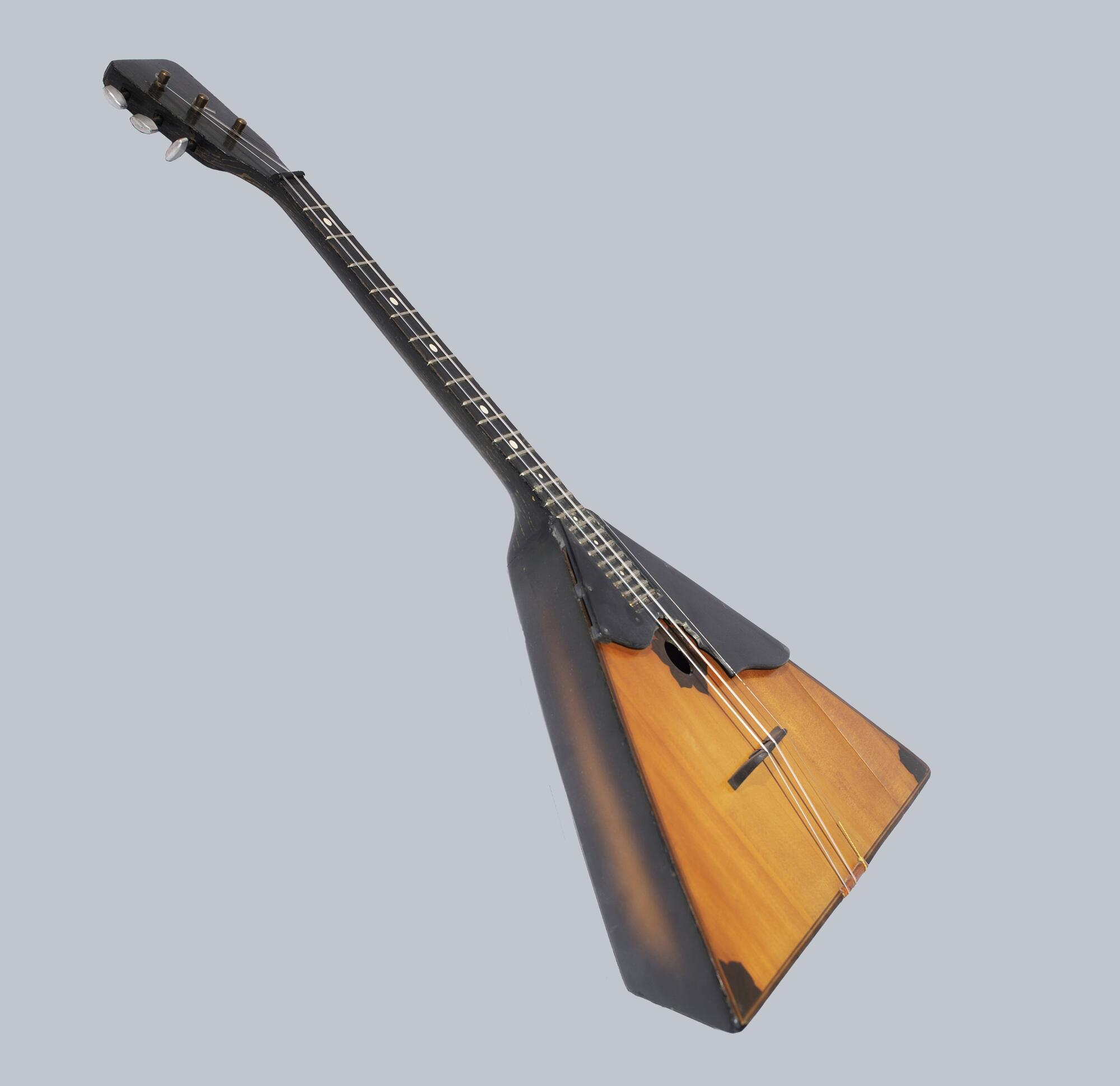According to the virtuoso balalaika player Vladimir Bakitko, a successful performance depends on three main factors: the choice of repertoire, the skills of the musician, and the quality of the instrument. He once described his balalaika which he had played for over three decades, “This one is already an antique. It has a very nice, very soft sound…” Nowadays, this time-honored instrument is displayed at the museum.
There are several etymological theories as to where the word “balalaika” came from. According to one of them, the instrument got its name from the words “balakat” (to blab) and “balagurit” (to joke). The balalaika itself was not taken seriously for a long time.
Before the balalaika appeared, street performers played the domra which accompanied their satirical and sometimes rather impudent verses. Tsar Alexis of Russia banned the use of domra, gusli, and other “demonic instruments” which made them disappear almost completely. Instead of them, the common people started playing a new instrument with two strings and a long fretboard. The body was made of gourds, hollowed-out scoops, or other improvised materials. Even in the 18thcentury, there were instruments with both triangular and rounded bodies.
In the sophisticated 19th century, interest in the balalaika almost died out. The instrument was saved from oblivion by the enlightener Vasily Andreyev. He found craftsmen who restored and improved the three-stringed instrument. They included Franz Paserbsky and Semyon Nalimov. Andreyev approved the triangular shape of the body and the size of the deck. Taking into account the quality of the wood, he decided to make the soundboard of spruce and the back of beech. Franz Paserbsky developed a series of balalaikas, which formed the basic Russian folk orchestra: prima, piccolo, tenor, alto, bass, and contrabass.
In 1888, with the support of Emperor Alexander III, Andreyev presented his balalaika band in St. Petersburg.
While it was earlier used only by the common people,
with Andreyev’s help the balalaika became a respected concert instrument with a
wide range of possibilities. Vladimir Bakitko said in an interview,




